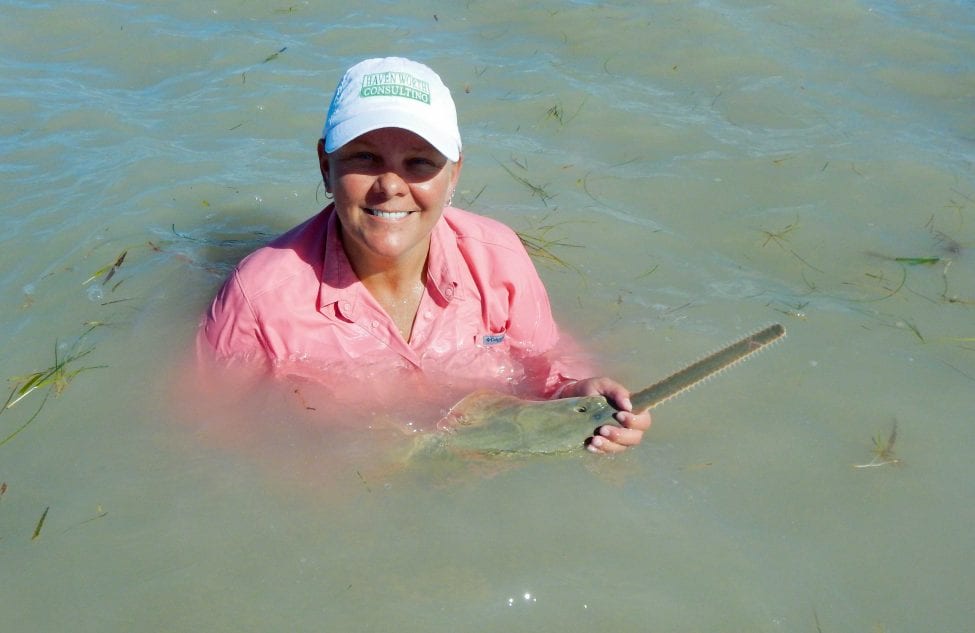An interview with Tonya Wiley
Sawfishes seemed to be species of the past in the United States, their range restricted to a last stronghold around Florida’s Everglades National Park. After 15 years of protection under the US Endangered Species Act, there are signs that the smalltooth sawfish may be increasing in number and spreading back northwards to reclaim its former range. Researcher Tonya Wiley fills us in on her plans for a project to sleuth out signs of this sawfish in Tampa Bay, the next stop on the road to recovery.
What made you decide to start searching for sawfishes in Tampa Bay?
I’ve been working with sawfishes since 2001, when I first started at Mote Marine Lab. Then in 2010 I went on to found Havenworth Coastal Conservation to conduct my own research. The smalltooth sawfish Pristis pectinata is considered Critically Endangered by the IUCN and Endangered under the United States Endangered Species Act (ESA) and its range decreased dramatically to concentrate around south-western Florida, from Charlotte Harbor to the Florida Keys. Historically, the sawfish population was strongest in southern Florida, so when it was decimated the remnants clung on in south-western Florida, a large part of which is the Everglades National Park. Established in the 1940s, the park is probably why this sawfish survived at all: its expanses of natural habitat and the limited fishing pressure in it made it a refuge for the species. As a result, most sawfish research has been centred on south Florida and my work to date has been around the Everglades and the Keys.
The smalltooth sawfish has been listed under the ESA since 2003 and there has been some recent indication of possible signs of recovery. One such sign is that we’re starting to see the population spread back northwards. Charlotte Harbor has been the northernmost location from which we regularly received reports of sawfish – and the next stop to the north would be Tampa Bay, where I live. This is where my field project is now concentrated.
You have a major outreach component to your project. Why is public engagement so important?
The outreach part of the project is to firstly let people know that sawfishes exist. Most people have never heard of them, let alone seen one! It’s important to let people know that this species is in the region and that it is Endangered, especially since water-users are more likely to encounter a sawfish if the population is indeed recovering and extending northwards. Whether someone is boating or fishing or simply taking a stroll on the shore, we want to equip them with information about how to report a sighting. We want to give fishermen guidelines on how to handle sawfishes and release them safely if they’re caught and to tell divers how to view a sawfish safely if they encounter one while diving. This means that I will be giving lots of talks this year at diving and fishing events, setting up a stall at expos and posting information posters at fishing piers and boating harbours. I’m aiming to get the word out in a variety of ways because reports from the public will also help us with our field surveys.
The sawfish sleuth
The smalltooth sawfish populations that once spread from Texas to North Carolina have vanished, except for a small reserve in south Florida. However, it seems that protection measures in recent years might be helping these sawfish to recover. Tonya is searching for clues in Tampa Bay, the first place where recovering sawfish populations would extend their range north.
